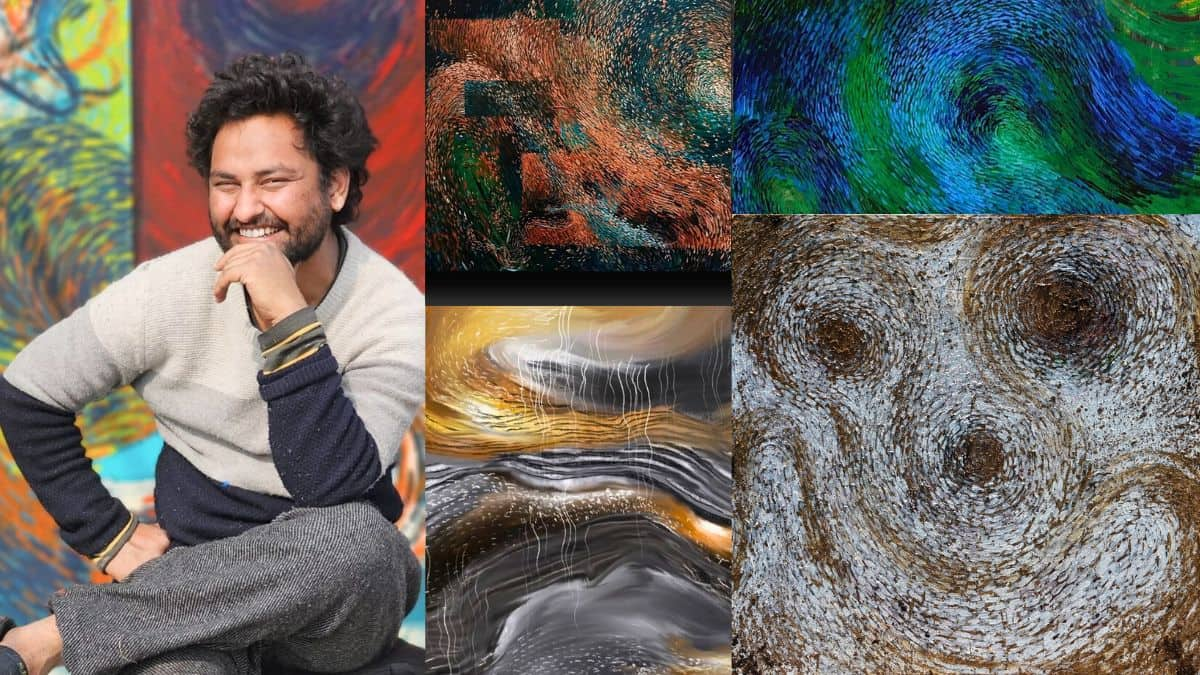Every civilisation has expressed itself through art. Be it 40,000-year-old cave paintings or the modern ‘non-fungible tokens’ (NFTs).
Everyone who creates art is called an ‘artist.’
Art includes Da Vinci’s “Mona Lisa,” which sees a footfall of up to 10 million people a year and is now an international treasure elevating the creator’s status to that of a master.’
It also includes performative exhibitions like Serbian artist Marina Abramović’s six-hour-long ‘art’ in which people hurled slurs at her, spit, or attempted to burn her hair.
In short, art, like life, is what we make of it.
While the extremes of art are something best left to scholars, soil, the substance we see all around us, is fast becoming a medium of self-expression.
Not on beaches and open spaces, but artists are now isolating soil and using it directly on canvases.
This author caught up with Aakash Arya, a 26-year-old artist, teacher, and creator, to learn more about this medium but also the limits, life, and scope of an artist.
How did you begin to work with soil?
“Soil is an experiment for me currently because where I hail from, a small village in Uttarakhand, there has been a lot of connection to soil. I have played with it, and when I headed to a city, that was missing.”
“When I was in fifth grade, we shifted to a city, so there was always regret that we came out of the village. When I came into art, I used to landscape. But when I got deeper into art, we tended to be minimalistic about it all. I thought that my art practice was very stuck in Delhi due to buildings and cemented structures; I always wanted to go back home.”
This drove me to find a new material, and that is soil.
How can soil become a medium for art?
“There is no specific term called’soil art,’ but it is my personal choice to work with soil. My mother used to use soil for household chores, and I used to observe. Maybe this got ingrained in me.”
“The process I follow is that I take soil, keep it in water, add cow dung and other substances to it, and then directly use it on canvas. I then layer the soil and repeat the process for a while. Layer by layer, your art starts developing. I used acrylic in it. When you mix colour and soil, it is called’mix-media.’ In the future, it can be that I work solely with soil without any added colour.”
Are there any renowned artists who have used soil in their work?
“Many other artists work with soil. Kirsten Kurtz is an artist. She works with soil a lot and even has her own soil lab (Cornell Soil Health Laboratory, USA). I keep talking to her and learning. There are a lot of young artists in Shantiniketan who are using soil as a medium. But everyone has a different concern. My concern is the mountains, my village, and Uttarakhand. The stories are different. I can depict folk art through the soil. Others may be using the same soil but may depict something else.”
How has life been as a freelance artist?
“It has both pros and cons. Sometimes you see a lot of poverty. But sometimes it feels good too because you are empty from the inside. I did a job along with college, and I used to think that there was always a weight on me. For example, if I am assisting an artist, I am just following that artist’s style and do not have enough time for my creativity. I even used to dream of the school or my job. When your entire day goes into it, you do not have enough time for yourself.”
“When I left my job, I realised that if you want to create your own body of work, you need your own space. I sometimes face a lot of financial struggles, but I somehow manage.”
Do you have tips for people to better understand abstract art?
“Understanding abstract art is not important, but feeling it is more important. What you feel when you see art is important. Our eyes invoke emotions when they see a colour. Even when I display my art, people ask me about the theme of it all. I tell them to stand in front of the art, feel it, and tell me the emotions they are feeling. Everything you see makes you feel something.”
What are your suggestions for a budding artist?
“Every field has a lot of hard work. But in these ‘out of the box’ fields, you have to pay attention to your gut feeling. If you listen to it, it will be alright. For example, if you like painting but you also have to earn money, at that moment, we need to listen to your heart. If you don’t want to take up a job, don’t do it, but somehow you will have to generate money using your favourite way. For a budding artist, creating balance is important. Everything cannot be emotional. We have to live practically too. We must balance it all, be it art or work. There are no shortcuts.”
The world will always have artists, some great and some novices. From the doodles we make when we are bored to the paintings that go under the hammer for millions of dollars, everything is art. But now even the humble soil can be art, provided that we use it well.

